
The Last Supper, a pivotal event in Christian history, is vividly depicted in educational tools like worksheet PDFs․ These resources offer engaging activities, crafts, and reflections to help students understand the biblical story and its cultural impact․
Historical Background of The Last Supper
The Last Supper occurred during the Passover feast in Jerusalem, where Jesus shared a meaningful meal with his 12 apostles․ This event marked the institution of the Eucharist, symbolizing Jesus’ body and blood through bread and wine․ It was also the setting for Jesus’ announcement of Judas’ betrayal and Peter’s denial․ Historically, the meal reflected Jewish traditions, such as the Seder, while introducing Christian sacraments․ Worksheet PDFs often explore these details, offering activities that highlight the cultural and religious significance of the event․ They include multiple-choice questions, fill-in-the-blank exercises, and reflections on the biblical account․ These resources help students connect the historical context with its enduring spiritual meaning․
Such educational tools emphasize the meal’s role in Christian theology and its artistic representations over centuries․
Significance of The Last Supper in Religious and Artistic Contexts
The Last Supper holds profound religious significance as the institution of the Eucharist, symbolizing Christ’s sacrifice and unity with believers․ Artistically, it has inspired masterpieces like Leonardo da Vinci’s painting, which captures the emotional dynamics of the apostles․ Worksheet PDFs often explore these dual contexts, offering activities that analyze the biblical narrative and its artistic interpretations․ They include questions about symbolic elements, such as the bread and wine, and reflections on the cultural impact of the event․ These resources help students appreciate the Last Supper as both a sacred moment and a timeless subject in art history․
Such interdisciplinary approaches enrich understanding and engagement with the topic․

Artistic Interpretations of The Last Supper
The Last Supper has been artistically interpreted in various styles, from Leonardo da Vinci’s masterpiece to modern depictions․ Worksheets often feature these interpretations for study and reflection․
They include famous works by Dirk Bouts and Pieter Jansz Pourbus, showcasing cultural and symbolic elements․ These resources help students analyze artistic details and their religious significance․
Leonardo da Vinci’s Famous Painting
Leonardo da Vinci’s The Last Supper is one of the most renowned artistic depictions of the event․ Painted during his time in Milan (1495–1498), it captures the emotional moment when Jesus announces his betrayal․ The mural masterpiece showcases da Vinci’s innovative use of perspective and dynamic composition․ Jesus is centered, surrounded by the twelve apostles, each expressing distinct reactions․ The painting’s detail and emotional depth have made it a cornerstone of art history․ Worksheet PDFs often feature this iconic image, allowing students to analyze its elements, such as the disciples’ expressions and the symbolic placement of food․ These resources help learners connect the biblical narrative with artistic interpretation, fostering a deeper understanding of both the story and its cultural impact․
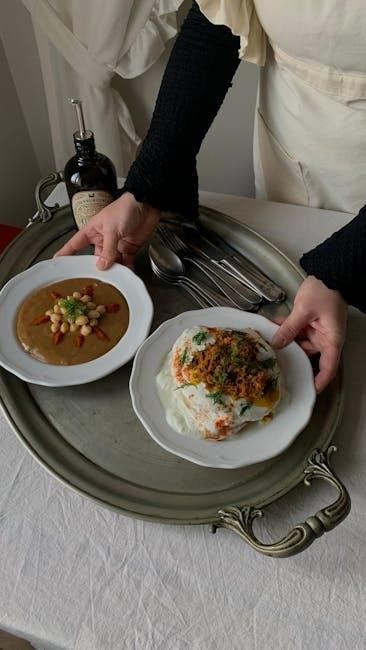
Other Artists’ Depictions of The Last Supper
Beyond Leonardo da Vinci’s masterpiece, numerous artists have reinterpreted The Last Supper, offering diverse perspectives․ Dirk Bouts’ version, painted in 1467, captures a somber mood, while Pieter Jansz Pourbus’ 16th-century depiction focuses on dramatic expressions․ Each artist brings unique stylistic elements, such as color schemes and compositions, reflecting their cultural contexts․ These works, like da Vinci’s, are often featured in worksheet PDFs, allowing students to compare artistic interpretations․ Such resources encourage learners to analyze how different artists convey the emotional depth of the biblical narrative․ By studying these depictions, students gain insights into both the historical event and the evolution of artistic representation․
Cultural and Symbolic Elements in The Last Supper Art
The Last Supper artwork is rich in cultural and symbolic elements, reflecting the biblical narrative and artistic traditions․ The table setting, with its bread and wine, symbolizes Christ’s sacrifice․ Peter’s knife and Judas’s spilled coins highlight pivotal moments․ These details, featured in worksheet PDFs, help students decipher symbols and their meanings․ Artists often incorporate motifs like the Passover meal and the Eucharist, linking the event to broader religious themes․ Cultural influences, such as Renaissance attire, add context, while emotional expressions convey the disciples’ turmoil․ Such elements enhance the educational value of worksheets, enabling learners to explore the intersection of art, faith, and history in The Last Supper․
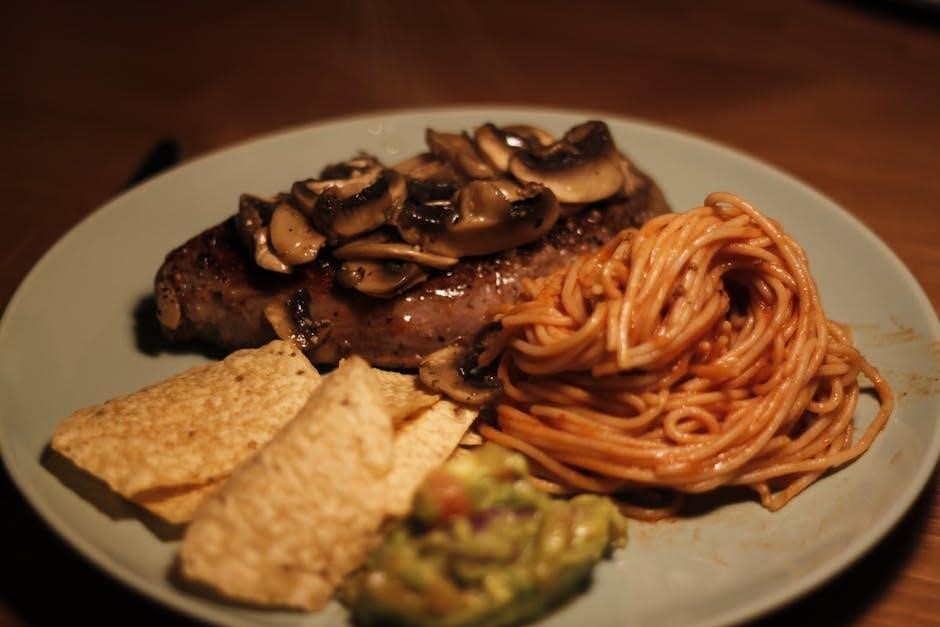
Educational Resources on The Last Supper
Educational resources on The Last Supper, including worksheet PDFs, offer engaging activities, crafts, and interactive elements for students to explore the biblical event and its significance․
Worksheet PDFs for Religious Education
Worksheet PDFs on The Last Supper are essential tools for religious education, offering engaging activities for students to explore the biblical event․ These resources include multiple-choice questions, fill-in-the-blank exercises, and coloring pages that focus on the story of Jesus and the Twelve Apostles․ The worksheets cover key details such as the Passover meal, Jesus’ sacrifice, and the disciples’ reactions․ Designed for various age groups, they provide a hands-on approach to learning about the significance of The Last Supper․ Many PDFs are available in both color and black-and-white formats, making them versatile for classroom or home use․ These educational materials align with curriculum standards, ensuring a comprehensive understanding of the event’s religious and historical importance․
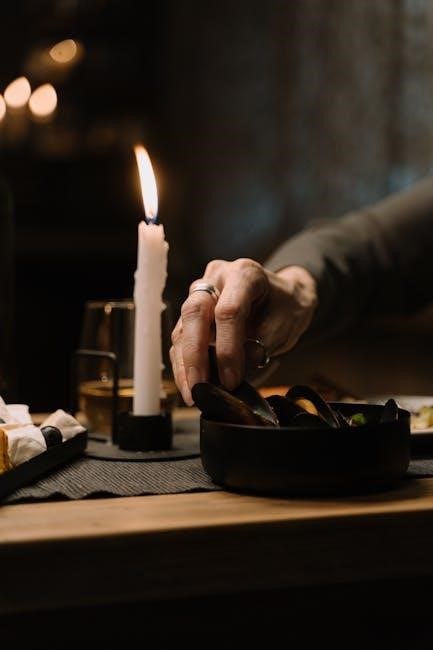
Lesson Plans for Teaching The Last Supper
Lesson plans for teaching The Last Supper are designed to help students explore its biblical significance and cultural impact․ These plans often include activities such as reading Bible passages (Matthew 26, John 13), discussing the story of Jesus and the disciples, and engaging in crafts or discussions․ For younger students, lessons may focus on the basics of the event, while older students can delve into theological meanings․ Many plans incorporate worksheet PDFs, offering multiple-choice questions, fill-in-the-blank exercises, and reflection prompts․ Teachers can adapt these resources to suit different age groups, ensuring a comprehensive understanding of The Last Supper’s importance in religious and historical contexts․ These lesson plans aim to make learning interactive and meaningful, helping students connect with the story on a deeper level․
Interactive Activities for Students
Engaging students with The Last Supper can be achieved through interactive activities that complement worksheet PDFs․ These include coloring pages, crafts, and hands-on projects that bring the story to life․ For example, students can color illustrations of Jesus and the apostles, then fold the artwork to recreate the table setting․ Slide shows or presentations allow students to sequence key events from the story․ Additionally, coding or decoding activities, such as revealing hidden messages related to the story, can enhance learning․ Group discussions and role-playing activities encourage deeper understanding and reflection․ These interactive methods help students connect emotionally and intellectually with the story of The Last Supper, making it a memorable learning experience․ Such activities are adaptable to different age groups and learning styles, ensuring inclusivity and engagement․
Key Details of The Last Supper
The Last Supper details include the biblical account, Jesus’ final meal with 12 apostles, and its cultural impact․ Worksheets and activities help students engage with the story․
The Biblical Account of The Last Supper
The biblical account of the Last Supper is found in Matthew 26 and John 13․ It describes Jesus sharing a Passover meal with His 12 apostles before His crucifixion․ During this gathering, Jesus instituted the Lord’s Supper, symbolizing His body and blood through bread and wine․ He also washed the disciples’ feet, teaching humility and service․ This event marked the establishment of the New Covenant and is a cornerstone of Christian theology․ Worksheets and lesson plans often focus on these key moments, helping students connect with the story’s spiritual significance and its role in Christian practices․ These resources make the biblical narrative accessible and engaging for learners of all ages․
Jesus and the Twelve Apostles
Jesus shared the Last Supper with His twelve apostles, a group of close followers chosen to spread His teachings․ This intimate gathering emphasized unity and purpose․ Worksheets often highlight their roles, with activities such as coloring the apostles and reflecting on their significance․ The apostles included Peter, John, and Judas, whose betrayal marked a turning point․ These educational resources help students explore the relationships and dynamics within the group, fostering a deeper understanding of their importance in the biblical narrative․ Interactive exercises and reflections in worksheet PDFs make learning about the apostles engaging and meaningful, connecting their stories to the broader message of the Last Supper and its enduring impact on Christianity․
The Last Supper as the First Lord’s Supper
The Last Supper marked the institution of the Eucharist, establishing it as the first Lord’s Supper․ Jesus used bread and wine to symbolize His body and blood, creating a sacred ritual for His followers․ Worksheet PDFs often include activities that explore this spiritual significance, such as fill-in-the-blank exercises about the symbolism of the bread and cup․ These resources help students connect the biblical account to modern Christian practices like Communion․ By focusing on this pivotal moment, educational materials emphasize the event’s role in shaping Christian worship and community․ The Last Supper’s legacy as the first Lord’s Supper underscores its enduring importance in religious education and spiritual reflection․
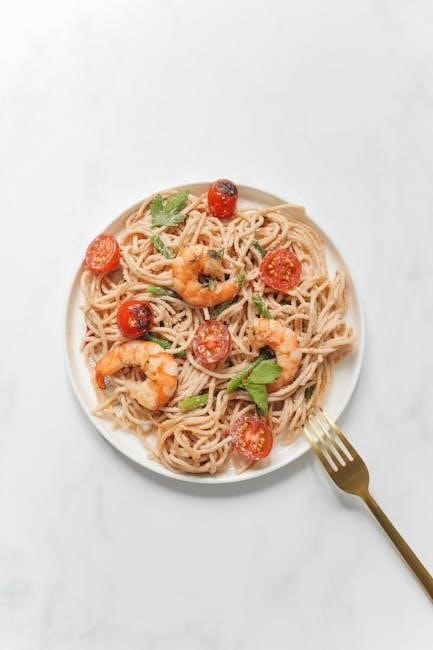
Teaching The Last Supper in the Classroom
Engage students with worksheet PDFs, craft activities, and interactive lessons to explore the Last Supper’s significance, fostering deeper understanding and connection to the biblical event․
Age-Appropriate Activities for Children
Engage young learners with fun and educational activities tailored to their age․ Use worksheet PDFs featuring coloring pages, puzzles, and simple crafts to explore the Last Supper story․ For younger children, focus on coloring Jesus and the 12 Apostles, while older kids can create foldable table settings to recreate the scene․ Interactive lessons, such as decoding activities or slide shows, help students recall key events․ These activities not only teach the biblical significance but also encourage creativity and participation․ Supplement with hands-on projects, like making bread or acting out the story, to deepen understanding and make learning enjoyable for all ages․
Using Worksheets and Printables Effectively
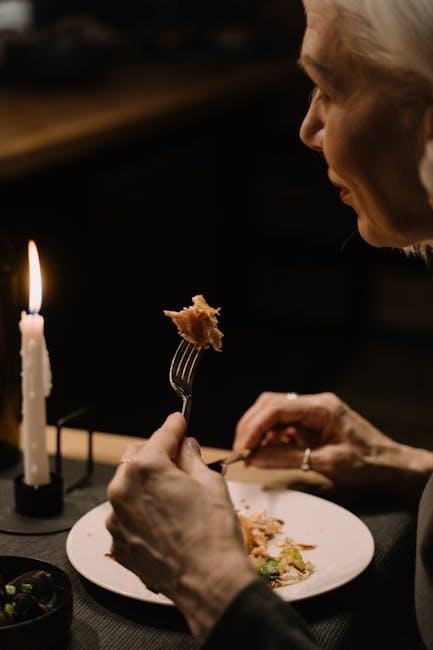
Worksheets and printables are invaluable tools for teaching the story of the Last Supper․ They provide structured learning through multiple-choice questions, fill-in-the-blank exercises, and coloring activities․ These resources help students engage with the biblical account, reinforcing key details like the number of disciples and the symbolism of the bread and cup․ For younger learners, activities like decoding or matching games make learning interactive and fun․ Teachers can also use these materials to assess understanding and track progress․ Aligning worksheets with curriculum standards ensures relevance and educational value․ By incorporating these printables into lessons, educators create a balanced approach that combines learning with creativity, making the story of the Last Supper accessible and memorable for students of all ages․
Engaging Students with Hands-On Projects
Hands-on projects are excellent for making the Last Supper relatable and interactive․ Craft activities, such as coloring and constructing scenes, allow students to visually represent the story․ Folding projects, where students create a 3D table setting with Jesus and the apostles, enhance spatial understanding․ Slide shows and pattern-based crafts help students recount key events․ These activities cater to different learning styles, ensuring engagement․ By involving students in creative tasks, educators foster a deeper connection to the subject matter․ Such projects complement worksheet-based learning, offering a dynamic approach to understanding the Last Supper’s significance․ They also encourage teamwork and individual creativity, making learning both enjoyable and effective for students of various ages and abilities․

Worksheet Design and Content
Worksheet PDFs on the Last Supper include multiple-choice questions, fill-in-the-blank exercises, and coloring activities․ They cover key details like the meal, Jesus washing feet, and its significance, designed to engage students and align with curriculum standards․ Available in both color and black-and-white formats, these resources offer versatility for various educational settings․
Multiple Choice and Fill-in-the-Blank Questions
Worksheet PDFs on the Last Supper often feature multiple-choice and fill-in-the-blank questions to test students’ understanding of the event․ These questions cover key details such as the number of disciples present, the significance of the bread and cup, and the events leading to Jesus’s crucifixion․ Fill-in-the-blank exercises help reinforce memory of biblical accounts, while multiple-choice options provide a structured way to assess comprehension․ These interactive elements make learning engaging and ensure students grasp the spiritual and historical importance of the Last Supper․ The questions are designed to align with curriculum standards, making them effective tools for religious education․ They also encourage critical thinking and reflection on the story’s deeper meanings․
Coloring and Craft Activities
Coloring and craft activities in Last Supper worksheet PDFs provide engaging ways for students to explore the story creatively․ These exercises often involve coloring scenes of Jesus and the Twelve Apostles, allowing students to visualize the event․ Crafts such as folding paper tables or creating symbolic elements like bread and cups help reinforce the story’s details․ Many worksheets include activities where students color specific characters or objects, such as Judas leaving the table or the Passover meal elements․ These creative tasks make learning interactive and memorable, while also helping students connect with the emotional and spiritual significance of the Last Supper․ Coloring activities are particularly effective for younger learners, as they combine art and education to deepen understanding․
Relevance of Worksheets to Curriculum Standards
Last Supper worksheet PDFs are designed to align with curriculum standards, ensuring educational value while engaging students․ These resources often cover key religious stories, such as Jesus entering Jerusalem and the Last Supper, which are central to biblical education․ Worksheets include activities like multiple-choice questions and fill-in-the-blank exercises, fostering critical thinking and comprehension skills․ Many are tailored to specific age groups, ensuring age-appropriate learning․ By addressing both religious and academic goals, these worksheets help students connect faith with education․ They also provide teachers with structured tools to meet curriculum requirements, making them invaluable for classroom use․ The combination of education and faith-based content ensures a well-rounded learning experience that aligns with educational standards while deepening students’ understanding of the Last Supper’s significance․

Additional Resources for Teachers
Teachers can find free and paid Last Supper worksheet PDFs on educational websites, offering lesson plans, crafts, and interactive activities․ Online tools also enable custom worksheet creation․
Where to Find Free and Paid Worksheet PDFs
Teachers can access free and paid Last Supper worksheet PDFs through various educational websites․ Platforms like classroomsecrets․co․uk and marykateteachsundayschool․com offer a range of resources, including lesson plans and activity pages․ Additionally, websites like ESLprintables provide English language learning materials related to the topic․ Paid options often include premium content, such as customizable worksheets and detailed lesson guides․ These resources cater to different age groups and educational needs, ensuring engaging and informative learning experiences for students․ They are designed to supplement religious education and art history lessons, making the story of The Last Supper accessible and interactive for learners of all ages․
Supplemental Materials for Lesson Plans
Supplemental materials for teaching The Last Supper include activity pages, slide shows, and crafts․ These resources, such as coloring pages and interactive projects, enhance lesson plans by engaging students visually and creatively․ Teachers can incorporate white cardstock for crafts, allowing students to recreate scenes or symbols from the biblical event․ Additionally, slide show patterns help students organize key events from the story․ These materials are available on educational websites like marykateteachsundayschool․com and classroomsecrets․co․uk, providing diverse options for educators․ By integrating these supplements, lesson plans become more dynamic and memorable, ensuring a deeper understanding of The Last Supper’s significance in both religious and historical contexts․
Online Tools for Creating Custom Worksheets
Online tools like Canva, Google Docs, and educational platforms such as Teachers Pay Teachers offer customizable templates for creating worksheets about The Last Supper․ These tools allow educators to design engaging activities, including word searches, crossword puzzles, and image labeling․ Websites like classroomsecrets․co․uk provide pre-designed PDFs that can be adapted to specific curriculum needs․ Additionally, platforms like marykateteachsundayschool․com offer downloadable resources that can be edited to suit different age groups or learning objectives․ These tools enable teachers to craft personalized worksheets that align with their lesson plans, ensuring students engage deeply with the story and themes of The Last Supper․
The Last Supper worksheet PDFs are essential tools for engaging students with the story and themes of this significant event, making learning both meaningful and accessible for all learners․
The Last Supper holds profound religious and cultural significance, marking Jesus’ final meal with His disciples before His crucifixion․ It symbolizes the institution of the Eucharist and the deep bond between Jesus and His followers․ The event emphasizes themes of sacrifice, loyalty, and spiritual guidance, making it a cornerstone of Christian theology․ Artistically, it has inspired masterpieces like Leonardo da Vinci’s painting, which captures the emotional depth of the moment․ Educationally, worksheet PDFs and related activities help students engage with the story, fostering understanding of its historical and symbolic meanings․ These resources make the event accessible and meaningful for learners of all ages, ensuring its importance endures through generations․
Final Thoughts on Using Worksheets for Learning

Using worksheet PDFs to explore the Last Supper offers an engaging and structured way to learn about this pivotal event․ These resources provide a variety of activities, such as multiple-choice questions, fill-in-the-blank exercises, and coloring pages, catering to different learning styles․ They help students remember key details about the Last Supper, such as the number of disciples, the significance of the bread and cup, and the emotional dynamics between Jesus and His followers․ Worksheets also encourage hands-on learning, making the story more relatable and memorable․ By incorporating these tools, educators can create a meaningful experience that reinforces spiritual lessons and fosters reflection․ This approach ensures that the Last Supper’s importance resonates with learners of all ages, making it a valuable addition to religious education․


